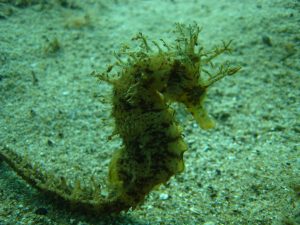Dear all, I would like to share a beautiful piece of film that was taken by our colleagues Gaynor and Marianne who are monitoring areas of the Costa Brava for the SILMAR project. As part of their studies they filmed and photographed these Spiny Seahorses only using ambient light so as to not disturb the seahorses. As you can see the video clearly shows an incredibly relaxed seahorse that is just moving with the wave action. This is a great piece of video as it shows clearly that if seahorses are approached properly and no light is used they remain very calm and relaxed. Kenna Eco Diving is part of the Seahorse Alliance which was set up to bring together like minded projects around the world to study seahorses in their natural environment.
Contact Gaynor and her team for top quality eco diving and thank you to them for sending us this video.
http://www.kennaecodiving.net/eco-escala-guide
https://www.youtube.com/watch?v=oGbqbvU5Rys&feature=em-share_video_user




Recent Comments